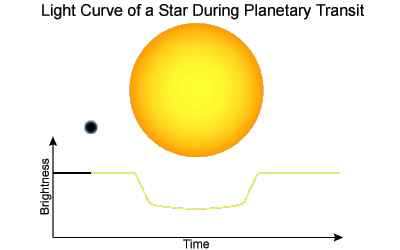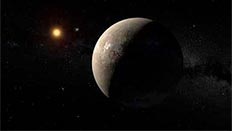Transits
What are transits?
When observing stars, we can detect how much light we receive from them every second – this is called their flux. If a planet were to pass between the star and our telescope when we are looking at it, we might hope to see a small black dot making its way across the image of the star. However, stars are too far away to resolve such detail. Instead, what we observe is a reduction in the amount of light we receive from the star during the time that the planet is in front of it. This fall in intensity is our evidence that we may have detected a planet.

How large is the signal?
We can find out how much of the stellar disk the planet covers by using the formula for the area of a circle. We can use the area of a circle rather than the area of a 3D sphere because when we look at planets or stars from far away they do simply look like circles, much like in the animation above. The area of a circle is given by A = πr2 where ‘r’ is the radius of the circle. Using this formula, and the following information, calculate what percentage of the Sun’s light the Earth and Jupiter would block out in a transit when viewed from very far away.
- Sun’s radius ~ 700,000km
- Jupiter’s radius ~ 70,000km
- Earth’s radius ~ 6,400km

